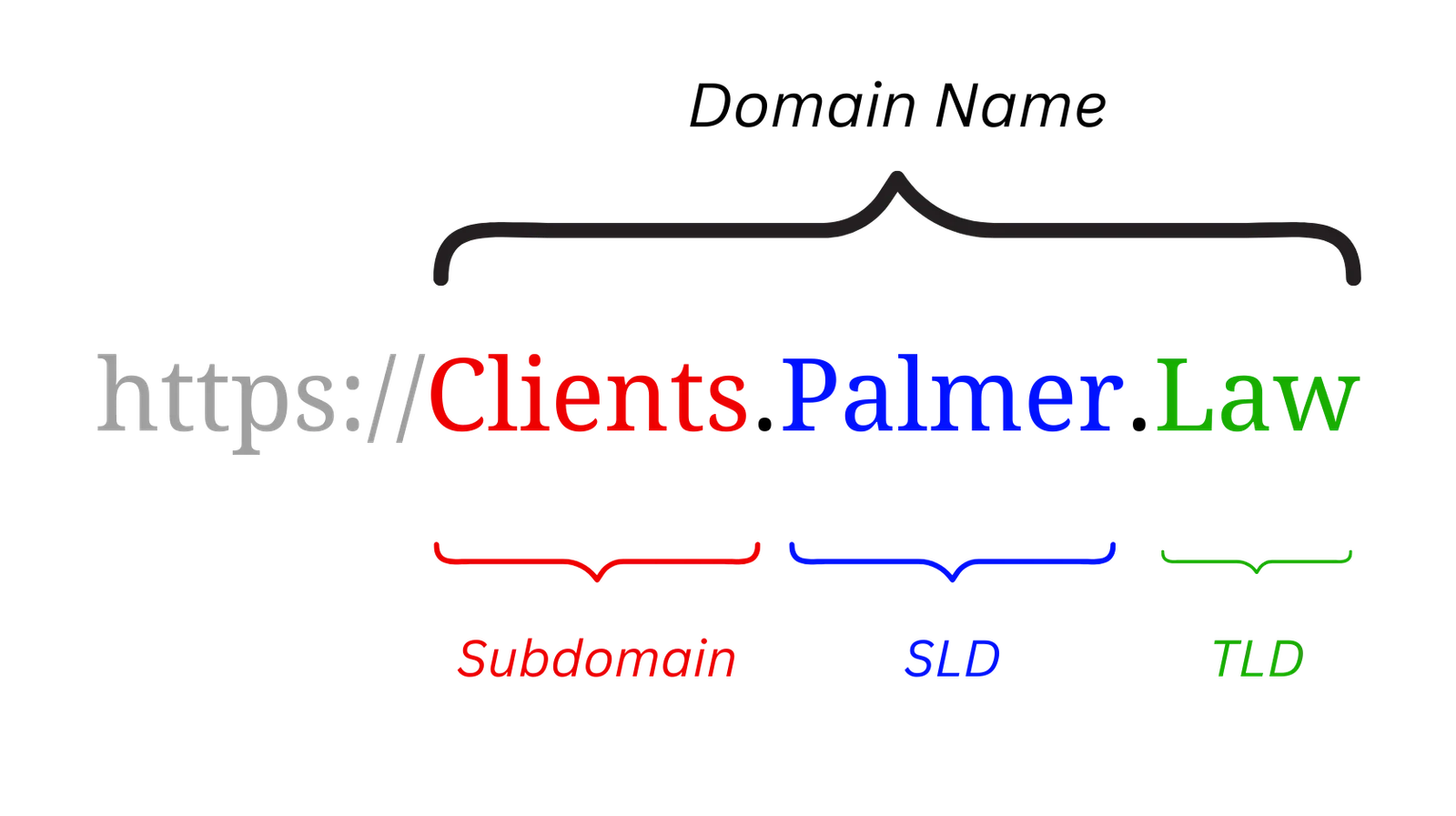A domain name is the word or phrase used to access a specific website on the Internet. The domain name for this website is Palmer.Law. Domain names can have several different elements. For example, the address for this website includes the second-level domainPalmerand the top-level domainLaw, separated by a period. A domain name could also feature a subdomain, which would look as follows: Clients.Palmer.Law. In this example,Clientsis the subdomain.
Domain names are crucial business assets. Top-level domains (TLDs) provide trust, authenticity, and utility signals to users. Users in the United States may trust domain names ending in .gov differently than they trust other domain names, since domains ending in .gov are provided through the federal government. Users may likewise trust domain names ending in .com differently than they trust domain names featuring different TLDs, since .com has come to represent legitimate goods and services offerings. Still yet, other TLDs are restricted to owners who must meet certain criteria. Owners of domain names featuring the .law TLD must be attorneys or law firms. There are also country-specific TLDs, like .us or .uk, called country-code TLDs (ccTLDs), as well as other categories of TLDs.
The most important portion of a domain name is often the second-level domain (SLD), commonly featuring a trademarked or descriptive word or phrase that is important to a company’s marketing or web presence. These SLDs are frequent sources of dispute, especially considering the importance of search engine optimization and the value businesses place on their trademarks.
How can you protect your domain name?
Domain names should not be confused with trademarks. Although these forms of intellectual property often overlap conceptually, they can be independently acquired, protected, and owned. Still, there are steps one can and should take to acquire trademark rights and strengthen their claim to a domain name. Visit this page to learn more about trademark protection. Trademark registration with a federal intellectual property office is a recommended step.
The Uniform Domain-Name Dispute-Resolution Policy (UDRP) is a popular mechanism for protecting domain name ownership. The Internet Corporation for Assigned Names and Numbers (ICANN) promulgated and administers the UDRP, which serves as a dispute resolution procedure for bad faith use and registration of domain names.
The UDRP arose in response to “typosquatters” who would take advantage commonly misspelled words and phrases to siphon internet traffic from domain name owners. For example, a typosquatter might register the domain name Plamer.Law to capture user traffic intended for Palmer.Law, then hold the domain hostage in an attempt to sell it to the owner of Palmer.Law or to improperly compete with that owner. Typosquatting is not the only bad faith action the UDRP remedies. It may also be used to address bad faith use and registration of domain names featuring SLDs spelled identically to those of their earlier registrants.
The UDRP provides an affordable and expedient resolution to domain name disputes, and it can be used to resolve disputes regardless of the domain name owner’s location around the world. ICANN provdes a selection of Approved Providers through whom a UDRP proceeding may be litigated, and those Approved Providers are situated in countries across the globe.
Other mechanisms available to domain name owners for dispute resolution include non-UDRP dispute resolution directly through a domain name Registrar and standard litigation under the Anticybersquating Consumer Protection Act (ACPA).
